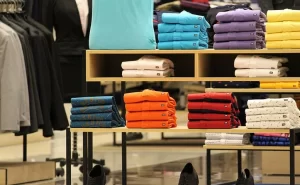This article will show you how to start a clothing business from scratch. You’ll learn about the different kinds of businesses available, what kind of startup costs you may incur, and how to find financing.
Starting a clothing store business can be one of the most lucrative ventures you can properly embark on as an entrepreneur. These days, it is not that difficult to get started. You don’t have to have a large capital outlay and load your inventory before you even know your customer base. AS with starting any business, there are certain things you need to do for your clothing store business to stand out in the market.
Clothing stores come in all shapes, sizes, and specialties. They can be small boutiques or large department stores. Some are online-only, and others have physical storefronts. Some specialize in selling a certain category of clothing, such as men’s clothing or women’s clothing, while other stores sell everything from baby clothes to formal wear.

How to Open a Clothing Store
If you’re looking to start a clothing store, there are a few steps you’ll need to take. Here’s a guide to help you open up shop.
1. Deciding on What Kind of Clothing Store You Want to Open.
Before you can open a clothing store, you need to know what kind of clothing store you want to open. This is an important step because it will help determine your location, marketing strategy, and labor needs.
Here are the different types of clothing stores you can open:
Retail clothing store: A retail clothing store sells clothes directly to the end user. This is one of the most common types of clothing stores and includes both physical and online stores.
Wholesale clothing store. These clothing stores sell merchandise to other retail-type stores across the nation, who in turn resell those clothes at retail price. They purchase from manufacturers, import companies, and other wholesale stores. This is the most common type of store for small business owners to open.
Wholesale clothing distributor: A wholesale clothing distributor buys large quantities of clothing from manufacturers or importers and sells them to retailers. In this case, the retailer is the end user. Wholesale clothing distributors have less overhead than retail clothing stores, but they also have less potential for profit because they have smaller margins due to buying in bulk and selling in lower quantities.
Online clothing boutique. A more recent phenomenon is the opening of an online-only boutique. This can be more profitable than a retail store because you don’t have to pay rent on physical space or salespeople to run it, though it does require time and expertise in marketing and advertising.
2. Choose a Business Location:
The second step to opening any business is finding an appropriate location. When choosing a location, consider how accessible it is to customers, whether the space is large enough to accommodate the size of your store, and what rental costs are like in the area.

3. Register Your Business Name:
Next, you will need to set up your business as a legal entity by registering it and getting appropriate licenses from your local government secretariat.
4. Find suppliers and manufacturers:
Once you have capital, you will need to find suppliers from which you can buy wholesale clothing for sale in your store. Find suppliers, manufacturers, and wholesalers that carry the products you want to sell in your store. You can also look for products online, but you will likely have to pay higher shipping costs.
When choosing suppliers, consider the quality of service as well as price. If a supplier offers better customer service, it might be worth paying a little more.
Establish credit relationships with your suppliers. This will enable you to purchase goods on account instead of paying up front.
Make sure your supplier is reliable and offers high-quality items at reasonable prices so that you pass the savings on to your customers while still making a profit.
Determine Whether You Have Enough Capital to Start a Clothing Store
There are several different types of clothing stores. The kind you start will depend on your capital and the market you want to appeal to. A consignment store is the least expensive option, but your revenue may be limited. Retail stores, on the other hand, require a bigger investment as you must purchase inventory and keep it in stock until it sells. Refurbished or vintage stores are less expensive than retail stores because you can sell used items for a higher profit margin than new ones, although refurbishing costs may make this an unsuitable option for your particular business.
Consider your capitalization options. It may be possible to finance all or part of your venture through loans from family, friends or commercial lenders. If you decide to use personal loans, make sure that both parties understand the terms of repayment and put them in writing to avoid misunderstandings later on. Commercial lenders will likely require a business plan with financial projections before they approve any loan requests.
If you’re investing your own money, determine how much cash you have available and how long it can support your business without additional income. Consider how long it will take before you begin generating enough revenue to sustain yourself and pay back any loans.

Promote Your Store
It’s easy to set up a store, but it’s not always easy to find customers.
Finding customers is the most important part of selling. If you don’t have customers, you don’t have a business.
There are lots of ways to promote your store, and many of them are free. Here are some suggestions:
1. Email: If you have a list of email addresses from past customers, or if you collect email addresses from new customers, send them an email with a link to your online storefront. Be sure to include a compelling message about what makes your business special.
2. Free classified ads: Post free ads on Craigslist or other free sites. You can also post messages on online bulletin boards and forums related to the topic of your products.
3. Social media: Promote your store on social media sites like Facebook, Twitter, and Instagram. This can be done for free by posting product images and descriptions to your pages, or by paying for advertising space on these sites.
4. Paid advertising: Consider placing local newspaper ads and purchasing targeted ads on Google or elsewhere on the Web.
5. Create your own website to sell products on your own store.
6. Optimize for search engines (SEO). SEO is how people find your website when they search on Google, Bing or Yahoo! Use keywords in your product descriptions and blog content so people can find you easily. You can also use tools like Google AdWords or Bing Ads to advertise on search engines and generate leads from people searching for what you sell.
7. Set up a blog about your products, either on your own site or using a service like WordPress, Tumblr or Blogger. This is a long-term strategy that helps build trust with potential customers by showing them that you are an expert in your field.
8. Create videos about your products, either demonstrating how they work or showing them in action (action shots). Upload these videos to YouTube and other video-sharing sites and link back to your store site so that viewers can buy the items directly from your store.
It’s important to get the word out about your business. Although you can advertise, you may be able to reach more people with a different approach.
You could offer a coupon for new customers in your community newsletter. It would be at no cost to you.
If you’re marketing a local business on the Internet, create a profile on Google Places and Yelp. You’ll be easy to find when people search for similar businesses in your area.

Timely
Thanks for your comment, I’m most grateful